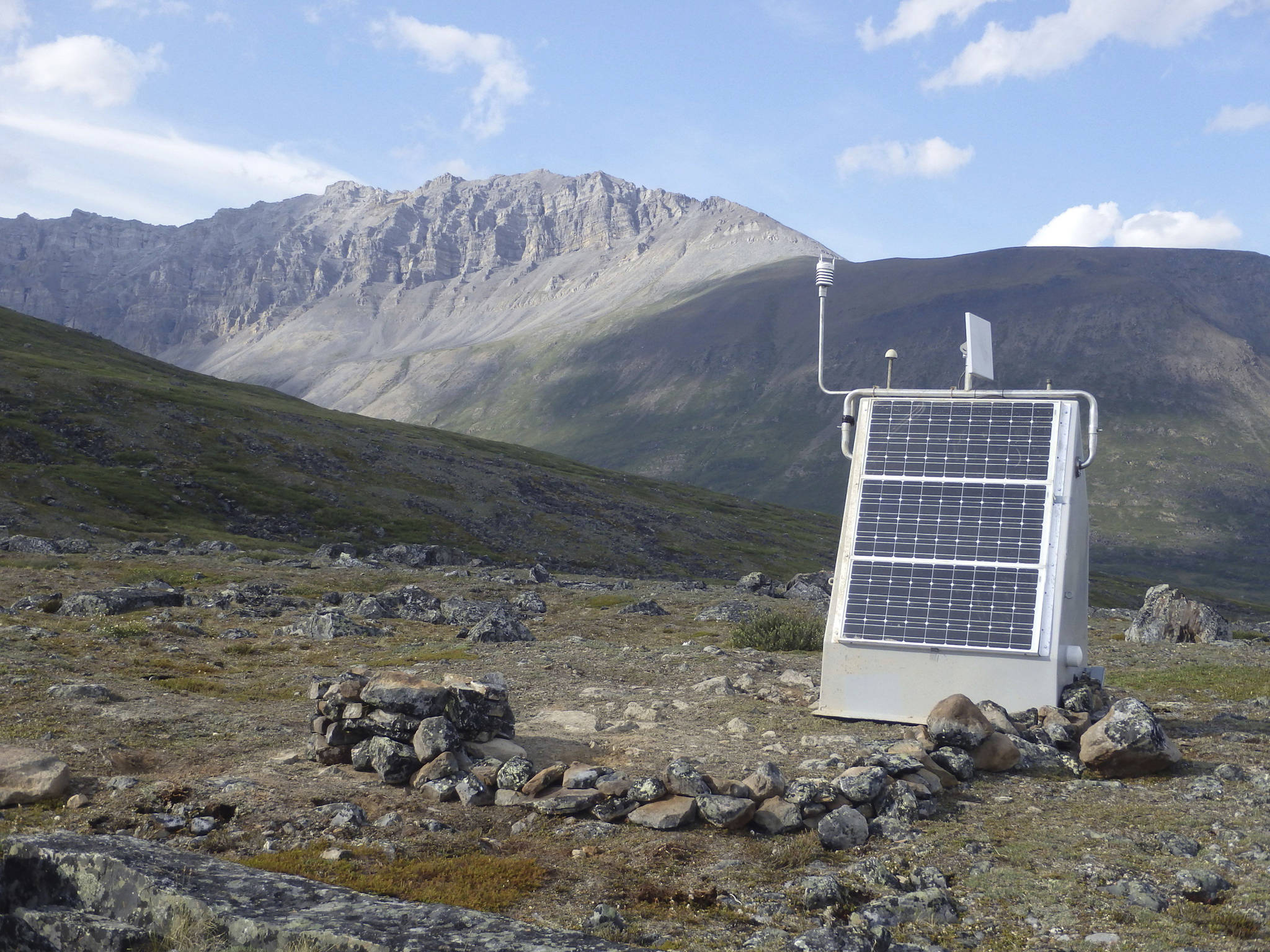ANCHORAGE — Alaska averages 40,000 earthquakes per year, with more large quakes than the other 49 states combined, and America’s shakiest state is about to have its ground examined like never before.
A federal agency that supports basic science research is completing installation in Alaska of an array of seismometers as part of its quest to map the Earth’s upper crust beneath North America.
When the magnitude 9.2 Great Alaska Earthquake ripped through the state in 1964, there were two seismometers in Alaska. At the end of this summer, there will be 260, swathing the state with instruments that record seismic waves and give geologists a picture of the upper 50 miles (80 kilometers) of the Earth. Alaska state seismologist Michael West calls it a “big freaking deal.”
“This footprint of instrumentation rolled across the country and is now wrapping up this grand, 15-year project” in Alaska, West said. The seismographs are deployed for the National Science Foundation by a consortium of U.S. universities that acquires and distributes seismological data.
Engineering them for Alaska was a challenge.
A helicopter flies in a lightweight drill rig to dig into bedrock or permafrost for the seismograph, said Bob Busby, transportable array manager for Incorporated Research Institutions for Seismology.
Solar panels mounted on fiberglass huts must gather energy throughout summer to charge lithium iron phosphate batteries — equivalent to two or three batteries in a Prius — that power equipment through the long winter.
The array of seismometers, part of the science foundation’s EarthScope project, has the ambitious goal of explaining how continents formed as well as something of more immediately interest: where dangerous earthquakes of the future may occur.
It’s tied to the theory of plate tectonics, which holds that Earth’s rigid outer layer is broken into large, mobile plates, like pieces of shell on a hard-boiled egg, if the shell pieces moved along, over and under each other.
Tectonic plates average 50 miles (80 kilometers) thick and move only as fast as fingernails grow. But when they intersect, pressure builds until plates slip, causing earthquakes and volcanoes.
“Any kind of ground shift is somehow related to the tectonic plates,” said Maggie Benoit, EarthScope science program director.
The study of plate tectonics is only about 40 years old, Benoit said, and the National Science Foundation made a quarter-billion-dollar commitment to advance the field.
Alaska is especially active, with 11 percent of the world’s earthquakes every year, because it’s located where two great plates converge, with the Pacific Plate slowly being pushed under the North American Plate.
There are three big pieces to EarthScope. One is a borehole into the San Andreas Fault to understand fault structure. A second is a series of GPS stations that document plate movement.
The third part is USArray, the network of hundreds of portable seismographs. The array was placed first in western states and over a decade moved east to other states. In the Pacific Northwest, the data has contributed to imaging chambers of molten rock at Mount St. Helens. Scientists in California are using GPS data to study groundwater use. A Brown University researcher is using data to study the formation of North America in southern and eastern states.
Alaska is more than twice the size of Texas but has nearly 350,000 fewer people than Rhode Island. Earthquakes that would devastate cities elsewhere often go unnoticed in Alaska because they occur in the Aleutian Islands or other sparsely inhabited areas.
The 260 seismic stations in Alaska will be about 50 miles (80 kilometers) apart. For added value, many are piggybacked with equipment to monitor weather and soil temperatures.
“That wasn’t the original goal,” West said. “But frankly, if you’re going to go out and plop down a power system and real-time communications to some remote locations, you might as well hang a bunch of widgets off of it.”
West said it’s interesting to think about the evolution of the Earth over 100 million years, but his use of the data will be for less theoretical purposes.
Every public structure, he said, uses building codes created on historical earthquake data. The data helps set insurance rates and design tsunami evacuation zones for Alaska coastal communities. Companies routinely make hundred-million-dollar design decisions for mines, pipelines and ports based on knowledge of earthquake hazards.
“If they know what the hazard is, they can build to it,” West said.

